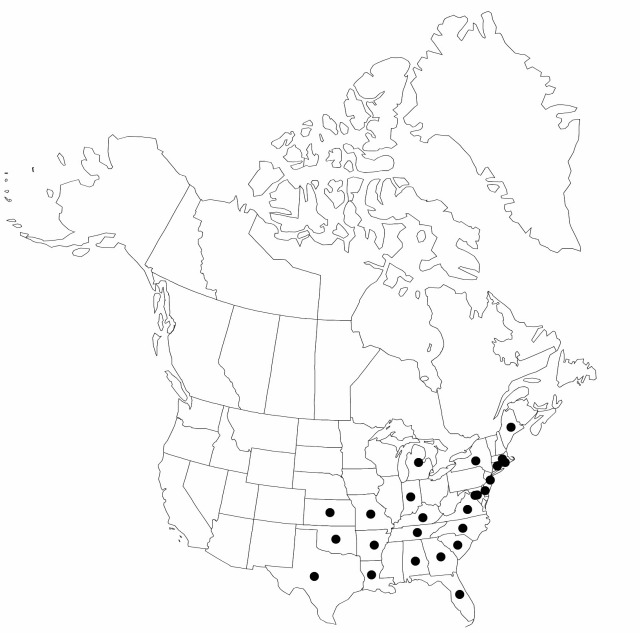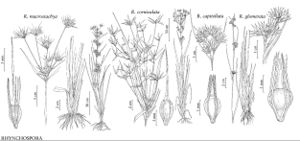Rhynchospora macrostachya
Ann. Lyceum Nat. Hist. New York 3: 206. 1835.
Plants perennial, cespitose, 80–150(–170) cm, coarse; rhizomes absent. Culms stiffly erect, leafy, triangular, multiribbed. Leaves ascending, overtopped by inflorescence; blades flat proximally, 3–10(–15) mm wide, apex attenuate, trigonous. Inflorescences terminal and axillary, narrow, clusters of corymbs, clusters dense, mostly broadly turbinate, 13–15 mm; bracteal leaves mostly exceeding subtended compounds. Spikelets brown, lanceoloid, 13–15 mm, apex acuminate; fertile scales lanceolate, 10–13 mm, apex acuminate, midrib shortexcurrent. Flowers: longer perianth bristles usually fully 2 times length of fruit body, antrorsely barbellate. Fruits 1–2 per spikelet, 20–25 mm; body pyriformobovoid, compressed, 5–6 × 2.6–3.6 mm; tubercle attenuate, 2-grooved, (15–)18–20(–21) mm. 2n = 18.
Phenology: Fruiting summer–fall.
Habitat: Acidic sunny wetlands, mostly pond shores, seeps, bogs, marshlands
Elevation: 0–400 m
Distribution

Ala., Ark., Conn., Del., D.C., Fla., Ga., Ind., Kans., Ky., La., Maine, Md., Mass., Mich., Mo., N.J., N.Y., N.C., Okla., R.I., S.C., Tenn., Tex., Va.
Discussion
Rhynchospora macrostachya is quickly distinguished from other species of its complex by more compact clusters, arranged on successive mid and distal nodes to present a narrow inflorescence outline. Its perianth bristles and fruit tubercles are the longest in the complex, probably in the entire genus.
Selected References
None.
